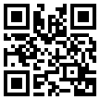Flu Vaccination Among Patients with Noncommunicable Diseases: A Survey About Awareness, Usage, Gaps and Barriers in Europe
- PMID: 39568654
- PMCID: PMC11577933
- DOI: 10.2147/PPA.S484302
Flu Vaccination Among Patients with Noncommunicable Diseases: A Survey About Awareness, Usage, Gaps and Barriers in Europe
Abstract
Purpose: People with noncommunicable diseases (NCDs) have a high risk of contracting flu and suffering from its associated complications; however, in many countries flu vaccine uptake in this group is sub-optimal. This survey assessed the knowledge, attitudes, and gaps toward vaccination in general and flu in particular among adults with NCDs in Europe.
Patients and methods: The survey was conducted in France, Italy, Spain, Germany, Poland, Belgium, Portugal, and the Czech Republic. A structured web-based questionnaire was administered to the subjects.
Results: In total, 1106 subjects were enrolled, with 61% aged between 41 and 60 years. The main reasons for getting vaccinated were disease prevention and healthcare practitioner recommendations. Protection against infection and the risks of not receiving a vaccination was the most common vaccine information received, followed by information about possible side effects, duration of protection, and need for a booster dose. In the unvaccinated group, there was a lack of belief in the need for a flu vaccine, with a lack of recommendation from treating practitioners, and the experience of mild severity of flu being the main barriers against the vaccine. The physician remained the most preferred and tapped resource for information followed by dedicated websites. Understanding of flu vaccine benefits was particularly widespread among vaccinated patients, yet >50% wanted to know more about them. There was less clarity of the benefits of flu vaccine among unvaccinated patients; however, approximately 50% of them wanted to know more about it. Between January 2021 and December 2022, about 30% and 36% of the vaccinated and unvaccinated individuals, respectively, reported having suffered from flu.
Conclusion: Healthcare practitioners are the key influencers for people to get vaccinated. The dissemination of information about the importance of flu vaccines needs to be increased, and clear and explanatory messaging based on country-specific characteristics is important.
Keywords: chronic underlying medical conditions; education; influenza; vaccines.
© 2024 Colombo and Hadigal.
Conflict of interest statement
LC and SH are employees of Viatris, which sponsored the study. The authors report no other conflicts of interest in this work.
Figures








Similar articles
-
Perceptions of Seasonal Influenza Vaccine Among U.S. Army Civilians and Dependents in the Kaiserslautern Military Community: A Mixed-Methods Survey.Mil Med. 2022 Mar 28;187(3-4):e394-e403. doi: 10.1093/milmed/usaa572. Mil Med. 2022. PMID: 33547793 Free PMC article.
-
Influenza vaccination coverage rates in 5 European countries: a population-based cross-sectional analysis of the seasons 02/03, 03/04 and 04/05.Infection. 2007 Oct;35(5):308-19. doi: 10.1007/s15010-007-6218-5. Epub 2007 Sep 20. Infection. 2007. PMID: 17885730
-
Why are older adults and individuals with underlying chronic diseases in Germany not vaccinated against flu? A population-based study.BMC Public Health. 2015 Jul 7;15:618. doi: 10.1186/s12889-015-1970-4. BMC Public Health. 2015. PMID: 26148480 Free PMC article.
-
Building and Sustaining Flu Vaccine Acceptance and Trust in the Black Community through Partnerships with Churches, Salons, and Barbershops.J Racial Ethn Health Disparities. 2024 Sep 6. doi: 10.1007/s40615-024-02141-7. Online ahead of print. J Racial Ethn Health Disparities. 2024. PMID: 39240452
-
European community pharmacists practice in tackling influenza.Explor Res Clin Soc Pharm. 2024 Apr 22;14:100447. doi: 10.1016/j.rcsop.2024.100447. eCollection 2024 Jun. Explor Res Clin Soc Pharm. 2024. PMID: 38707787 Free PMC article. Review.
Cited by
-
Influenza Vaccination Among Patients with Noncommunicable Diseases: A Survey About Awareness, Usage, and Unmet Needs in the Czech Republic.Drugs Real World Outcomes. 2025 Jun;12(2):311-324. doi: 10.1007/s40801-025-00483-0. Epub 2025 Apr 2. Drugs Real World Outcomes. 2025. PMID: 40172776 Free PMC article.
-
Knowledge, attitudes, barriers and uptake rate of influenza virus vaccine among adults with chronic diseases in Jordan: a multicentric cross-sectional study.Front Public Health. 2025 Jun 17;13:1603482. doi: 10.3389/fpubh.2025.1603482. eCollection 2025. Front Public Health. 2025. PMID: 40600162 Free PMC article.
-
Disparities in Seasonal Influenza Vaccination in Europe.Immun Inflamm Dis. 2025 Jul;13(7):e70186. doi: 10.1002/iid3.70186. Immun Inflamm Dis. 2025. PMID: 40626870 Free PMC article. Review.
References
-
- World Health Organization. Noncommunicable diseases. Available from: https://www.who.int/health-topics/noncommunicable-diseases#tab=tab_1. Accessed June 27, 2023.
-
- World Health Organization. Noncommunicable diseases - Fact sheet. Geneva: World Health Organization; 2021. Available from: https://www.who.int/news-room/fact-sheets/detail/noncommunicable-diseases. Accessed June 27, 2023.
-
- European Commission. Knowledge for policy: competence centre on foresight. Available from: https://knowledge4policy.ec.europa.eu/foresight/topic/shifting-health-ch.... Accessed June 27, 2023.
LinkOut - more resources
Full Text Sources

